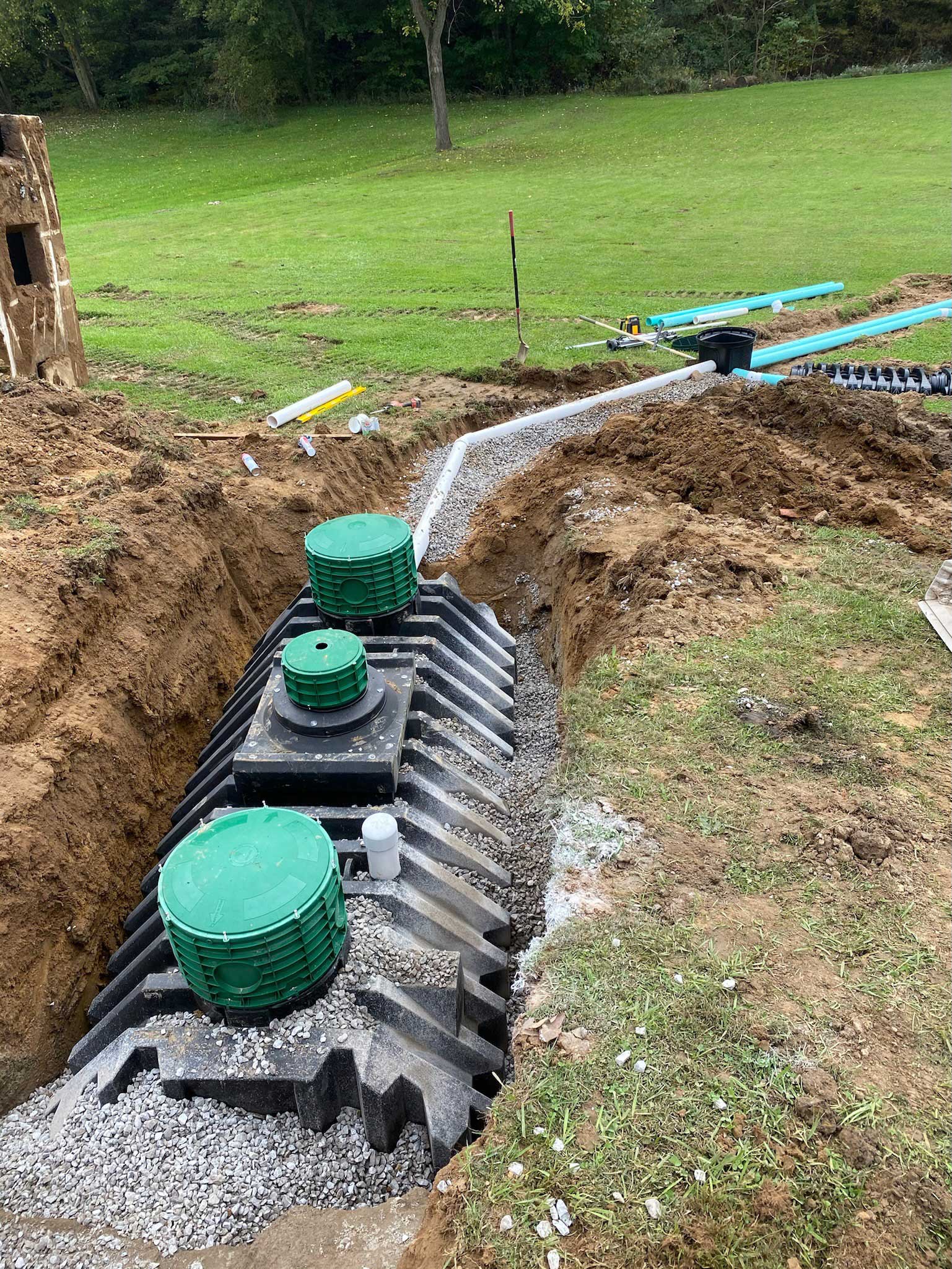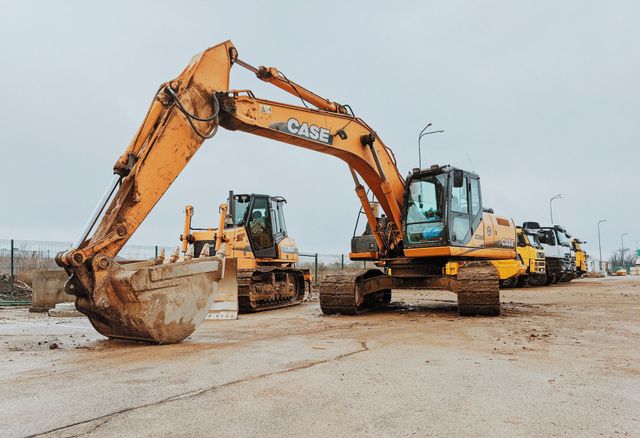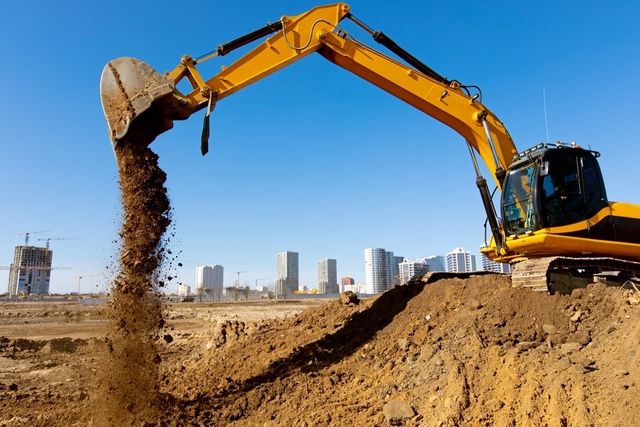Cost Effective Lancaster Excavation - High Quality Excavation at Competitive Costs
Cost Effective Lancaster Excavation - High Quality Excavation at Competitive Costs
Blog Article
Unveiling the Art of Excavation: Pro Tips for Safe and Efficient Excavating
As soil is turned and earth is moved, the complexities of excavation disclose themselves, requiring an eager understanding of tools, dirt make-up, security methods, and environmental considerations. The proficiency needed to navigate these aspects properly can imply the distinction between an effective excavation task and a prospective calamity.
Relevance of Appropriate Equipment
To make certain the safety and security and performance of any kind of excavation job, using the ideal devices is vital. Excavation projects vary in range and complexity, ranging from small residential landscape design tasks to large building undertakings.
These functional makers come in numerous sizes to match various job requirements. Miniature excavators are perfect for smaller tasks, while larger excavators take on extra extensive jobs efficiently.
Bulldozers succeed in tasks that call for pressing huge amounts of dirt or particles. By spending in the suitable tools, excavation jobs can be finished safely, on time, and with precision.
Understanding Dirt Make-up
A comprehensive understanding of soil structure is basic for performing excavation tasks with precision and safety. Comprehending the various sorts of dirt is critical as it straight impacts excavation techniques, tools option, and overall task effectiveness. Soil make-up generally contains four primary elements: sand, silt, clay, and natural issue. Each element has one-of-a-kind homes that affect how dirt reacts to excavation processes.
Silt fragments are smaller than sand however larger than clay, supplying modest drainage and communication. Organic matter, such as decomposing plant product, impacts dirt fertility and security.
Before commencing excavation, carrying out dirt examinations to determine its make-up and features is necessary. This information helps in choosing the appropriate devices, executing precaution, and developing excavation methods customized to the specific soil problems - septic ohio. By recognizing soil composition, excavation specialists can improve job end results while guaranteeing safety and adherence to finest techniques
Precaution and Procedures
Comprehending soil structure is the cornerstone upon which safety measures and procedures for excavation jobs are built, ensuring the well-being of workers and the success of the venture. When it involves security throughout excavation, there are several key procedures that must be carried out to minimize risks and prevent crashes.
Primarily, before any digging commences, an extensive evaluation of the website should be performed to determine any kind of possible risks such as below ground energies, unstable dirt conditions, or nearby structures that can position a risk. It is critical to have an experienced person oversee the excavation process to make certain that all safety protocols are complied with purely.
Moreover, all employees associated with the excavation must be effectively educated in secure digging methods and the correct operation of equipment. Individual protective equipment (PPE) such as tough hats, high exposure clothing, handwear covers, and safety and security boots ought to be put on at all times to decrease the risk of injuries. lancaster excavation. Normal security meetings and tool kit talks must also be conducted to maintain all workers informed concerning prospective threats and strengthen safe job techniques. By adhering to these safety and security procedures and procedures, excavation tasks can be completed successfully and without case.
Reliable Excavation Planning
When beginning on an excavation job, precise planning is essential to make sure performance, safety, and effective end results. Effective excavation preparation involves a number of essential actions that are crucial for the smooth execution of the project.
As soon as the site assessment is complete, the following step is to produce a clear timeline and timetable for the excavation tasks. This consists of determining the series of jobs, tools needs, and workforce appropriation. Appropriate organizing helps prevent delays and ensures that Source the project remains on track.

In addition, communication among all staff member is paramount throughout the planning phase. Clear regulations, normal updates, and efficient coordination are vital for an effective excavation task. By investing time and effort in meticulous planning, excavation teams can dramatically boost productivity, reduce risks, and achieve successful outcomes.

Handling Environmental Factors To Consider
With enhancing focus on environmental sustainability in building methods, managing environmental considerations has actually come to be a vital aspect of excavation jobs. Excavation tasks have the prospective to affect the surrounding atmosphere through dirt erosion, sediment runoff, environment disturbance, and contamination of water resources. To mitigate these dangers, it is necessary to apply best practices that focus on ecological defense.

In addition, proper waste monitoring is essential to avoid soil and water contamination. Executing procedures for the disposal of dangerous materials, recycling of waste materials, and go lessening using harmful chemicals can considerably minimize the ecological effect of excavation jobs. By incorporating these methods right into excavation planning and execution, construction companies can make certain that their tasks are not just risk-free and effective yet also ecologically liable.
Conclusion
To conclude, grasping the art of excavation requires a complete understanding of correct devices, soil make-up, safety and security procedures, and reliable planning. By adhering to these guidelines and considering ecological aspects, excavations can be performed safely and effectively. It is crucial to focus on security and productivity in every excavating job to make certain successful end results.
As soil is turned and earth is moved, the ins and outs of excavation reveal themselves, demanding an eager understanding of tools, dirt composition, security procedures, and ecological factors to consider.To ensure the safety and performance of any excavation project, utilizing the proper tools is critical.A thorough understanding of dirt make-up is essential for performing excavation tasks with accuracy and security. Recognizing the different kinds of dirt is important as it straight affects excavation techniques, tools choice, and overall task efficiency. By understanding soil structure, excavation professionals can boost job helpful hints outcomes while guaranteeing safety and security and adherence to best practices.
Report this page